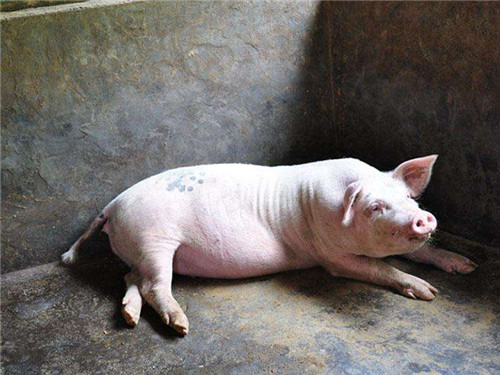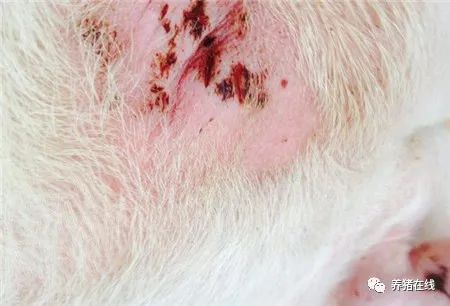Several good ways to treat porcine asthma! Do you know everything?
Porcine asthma, also known as Mycoplasma pneumoniae, is a chronic respiratory infectious disease of pigs. Next, I will tell you how to treat porcine asthma.

I. Overview of pathology
Porcine asthma, also known as Mycoplasma pneumoniae, is a chronic respiratory infectious disease of pigs. The main symptoms are cough and asthma.
The pathological changes were mainly located in the lungs in the chest, and pulmonary edema and emphysema were mainly found in acute cases, and shrimp-like consolidation in the lungs was seen in subacute and chronic cases, with slow growth rate, low feed utilization rate and prolonged fattening period.
II. Disease hazards
Mycoplasma hyopneumoniae is one of the main pathogens causing respiratory diseases in pigs, which mainly exists in respiratory tract, lung tissue, hilar lymph nodes and mediastinal lymph nodes of infected pigs. Diseased pigs and infected pigs are the main sources of infection, and the main routes of transmission are respiratory transmission, direct contact transmission and droplet transmission.
In the early stage of infection, Mycoplasma hyopneumoniae existed on the surface of trachea and bronchi and damaged the mucociliary barrier, resulting in the proliferation of lymphoid cells around bronchi and vessels.
The immune response of infected pigs to Mycoplasma hyopneumoniae mainly occurred 20 weeks after infection, so it can be seen that this infection has a certain immunosuppressive effect.
III. Morbidity and epidemic
The incidence of the disease has no difference in variety, age and sex, it can occur throughout the year, and it is more common when it is cold, rainy, humid or sudden climate change.
Poor feed quality, overcrowding, dampness and poor ventilation are the main causes. The mortality rate is not high when infected alone, but once the pigs are introduced, it is difficult to eliminate them completely if no strict measures are taken.
In the case of natural infection, it is easy to be secondary to Pasteurella multocida, pneumococci, Actinobacillus pleuropneumoniae, Salmonella and various suppurative bacteria, Mycoplasma suis and Chlamydia granulosa, etc., resulting in aggravation of the disease and increased mortality.
IV. Prevention and control measures
1, disease isolation: adhere to self-breeding, strictly put an end to the introduction of foreign sick pigs, if necessary, must be strict isolation and quarantine, at the same time do a good job of disinfection management.
2. Management within: ensure reasonable nutrition in all stages of the pig herd, avoid feed mildew and deterioration, control the small environment combined with seasonal changes, strictly control the feeding density, implement the whole in and all out system, and disinfect a variety of chemical disinfectants alternately on a regular basis.
3, vaccine immunity: the vaccine must be injected into the chest, intramuscular injection is ineffective. Pay attention to not feeding or injecting oxytetracycline, kanamycin and other drugs that inhibit the vaccine 15 days before the injection and two months after the injection.
4, with drugs: because Mycoplasma hyopneumoniae can change the surface antigen and cause immune escape, resulting in the weakening of immunity.
Therefore, pig farms need to cooperate with drug prevention and treatment, a course of treatment is generally 3mur5 days, especially pregnant sows are purified by mixing materials, and their piglets are raised separately, leaving no seed for use, and pig farms with suitable conditions are carried out to implement early isolation and weaning, so as to reduce the contact time between sows and piglets as much as possible, and pay attention to drug prevention and purification.
- Prev

How do pigs cough and wheeze and have a fever? Try the classic combination of these drugs!
How do pigs cough and wheeze and have a fever? Try the classic combination of these drugs!
- Next

How to deal with pig trauma? So that you can become a veterinarian without having to study.
How to deal with pig trauma? So that you can become a veterinarian without having to study.
Related
- On the eggshell is a badge full of pride. British Poultry Egg Market and Consumer observation
- British study: 72% of Britons are willing to buy native eggs raised by insects
- Guidelines for friendly egg production revised the increase of space in chicken sheds can not be forced to change feathers and lay eggs.
- Risk of delay in customs clearance Australia suspends lobster exports to China
- Pig semen-the Vector of virus Transmission (4)
- Pig semen-the Vector of virus Transmission (3)
- Five common causes of difficult control of classical swine fever in clinic and their countermeasures
- Foot-and-mouth disease is the most effective way to prevent it!
- PED is the number one killer of piglets and has to be guarded against in autumn and winter.
- What is "yellow fat pig"? Have you ever heard the pig collector talk about "yellow fat pig"?

